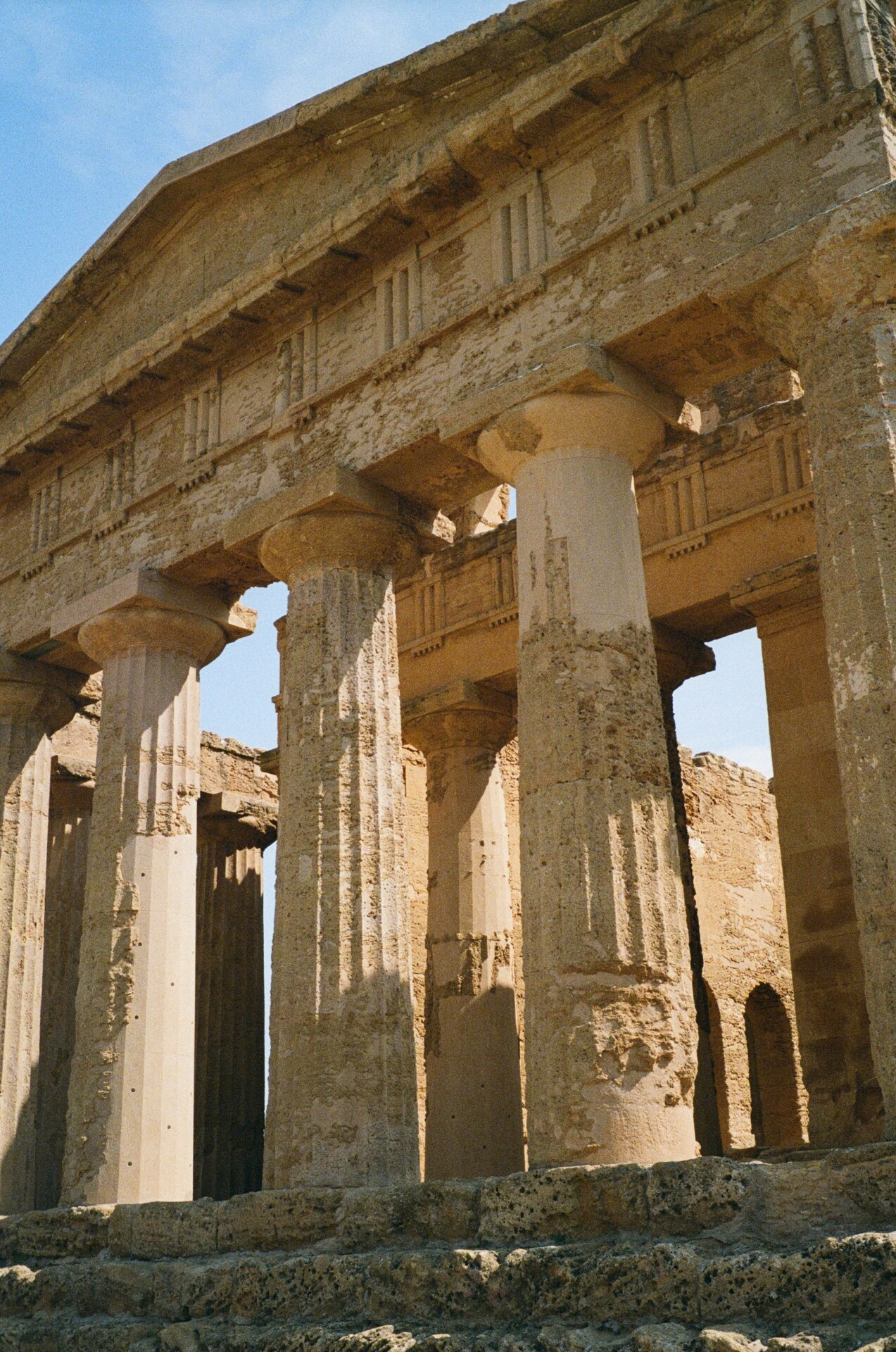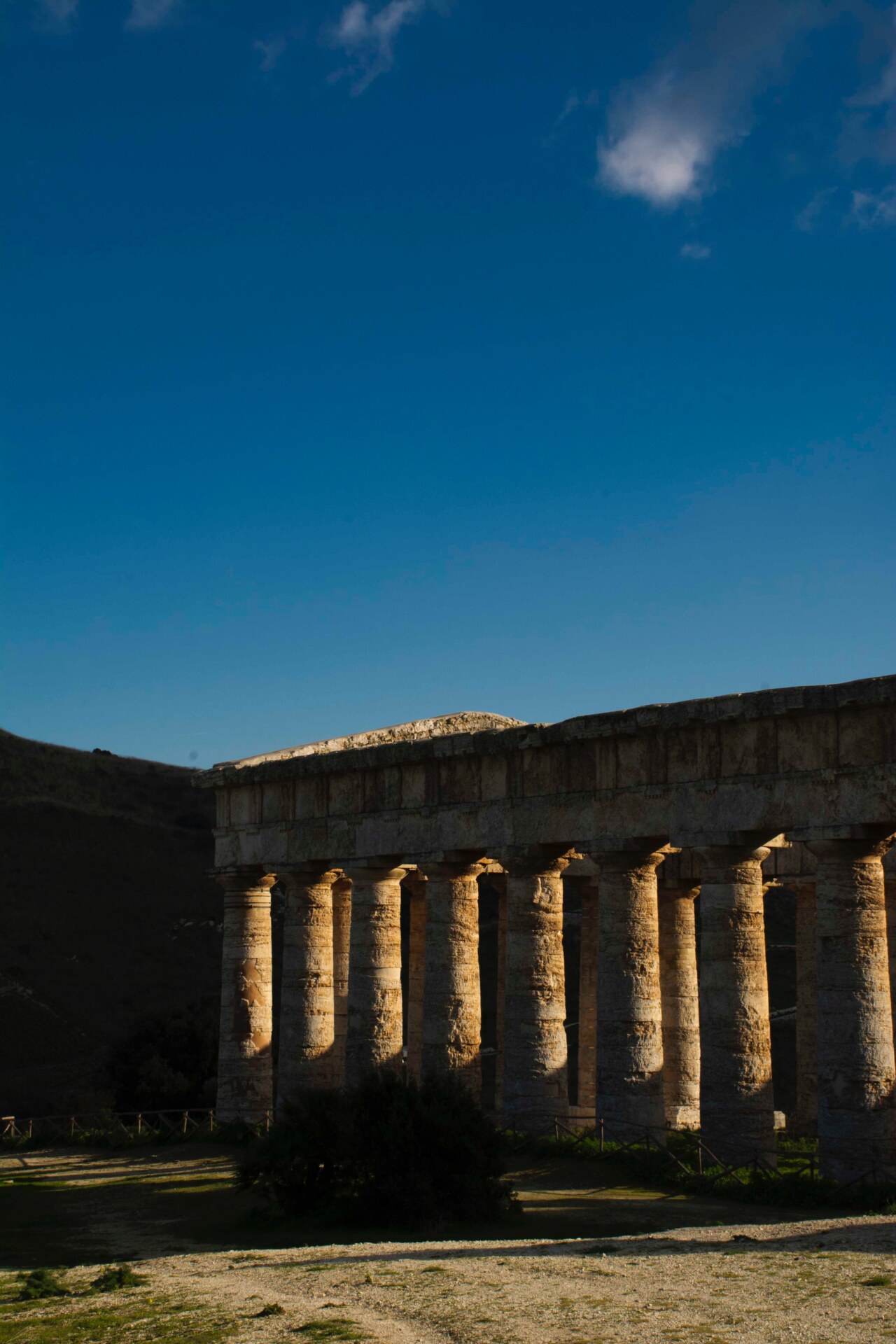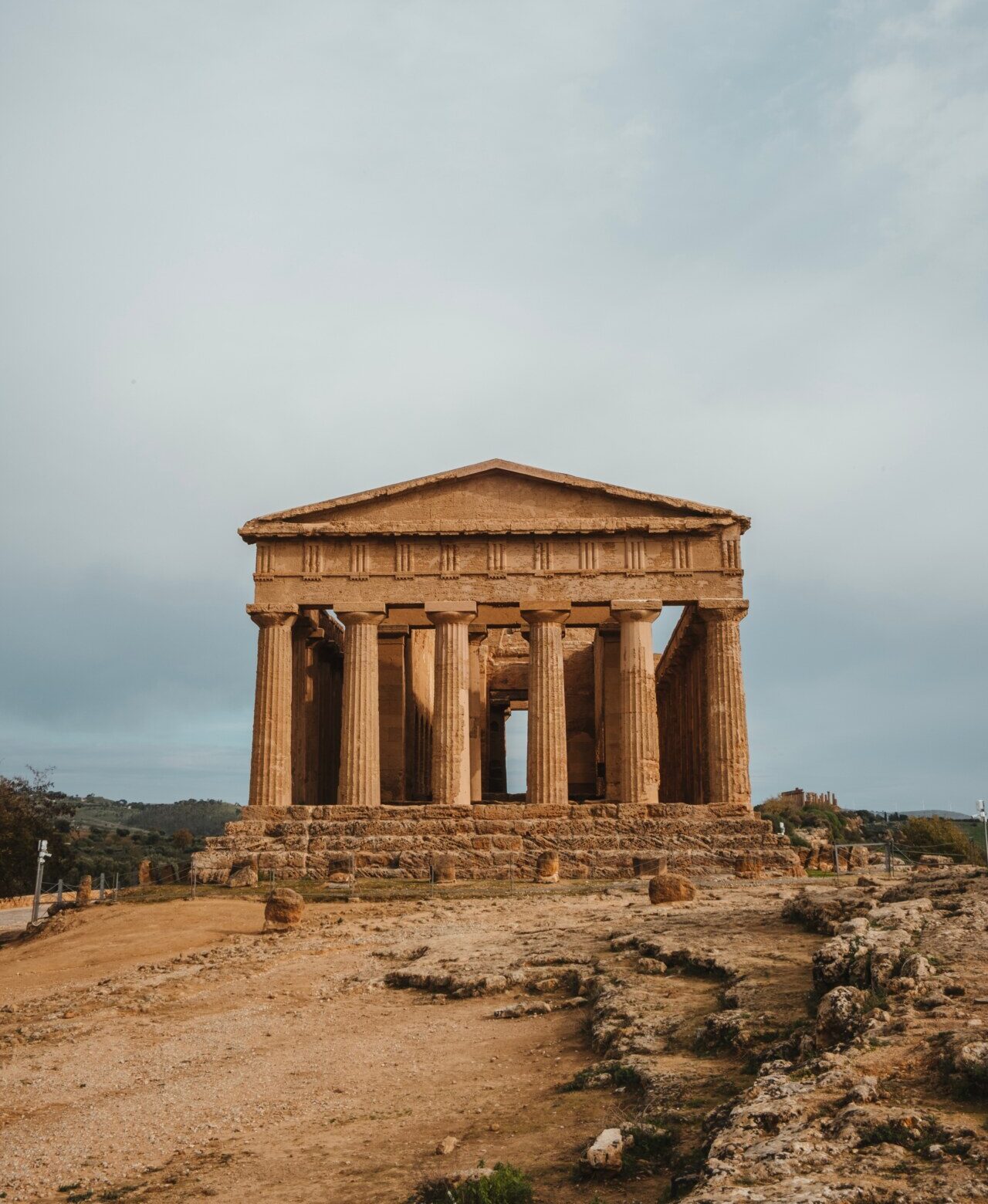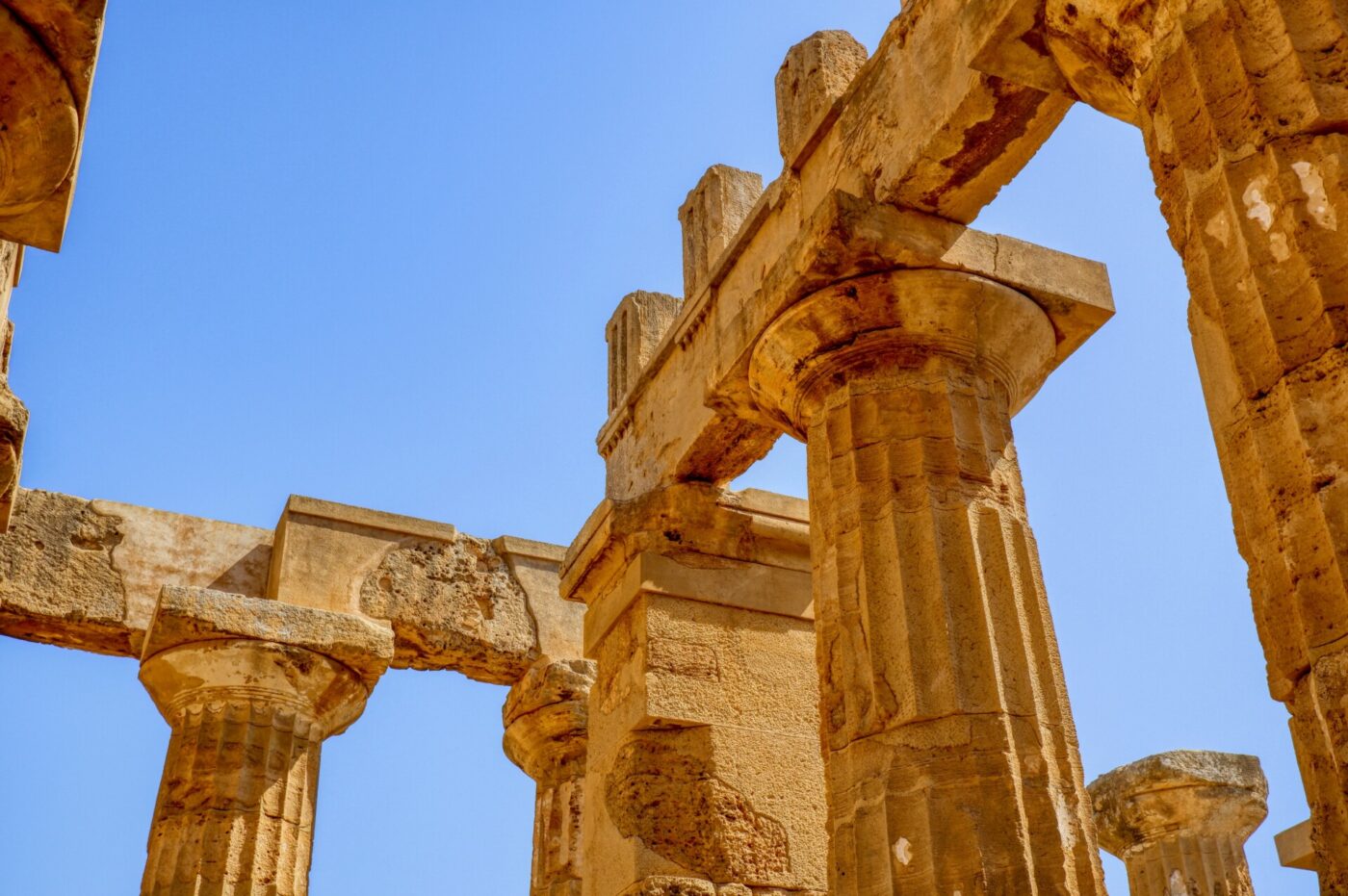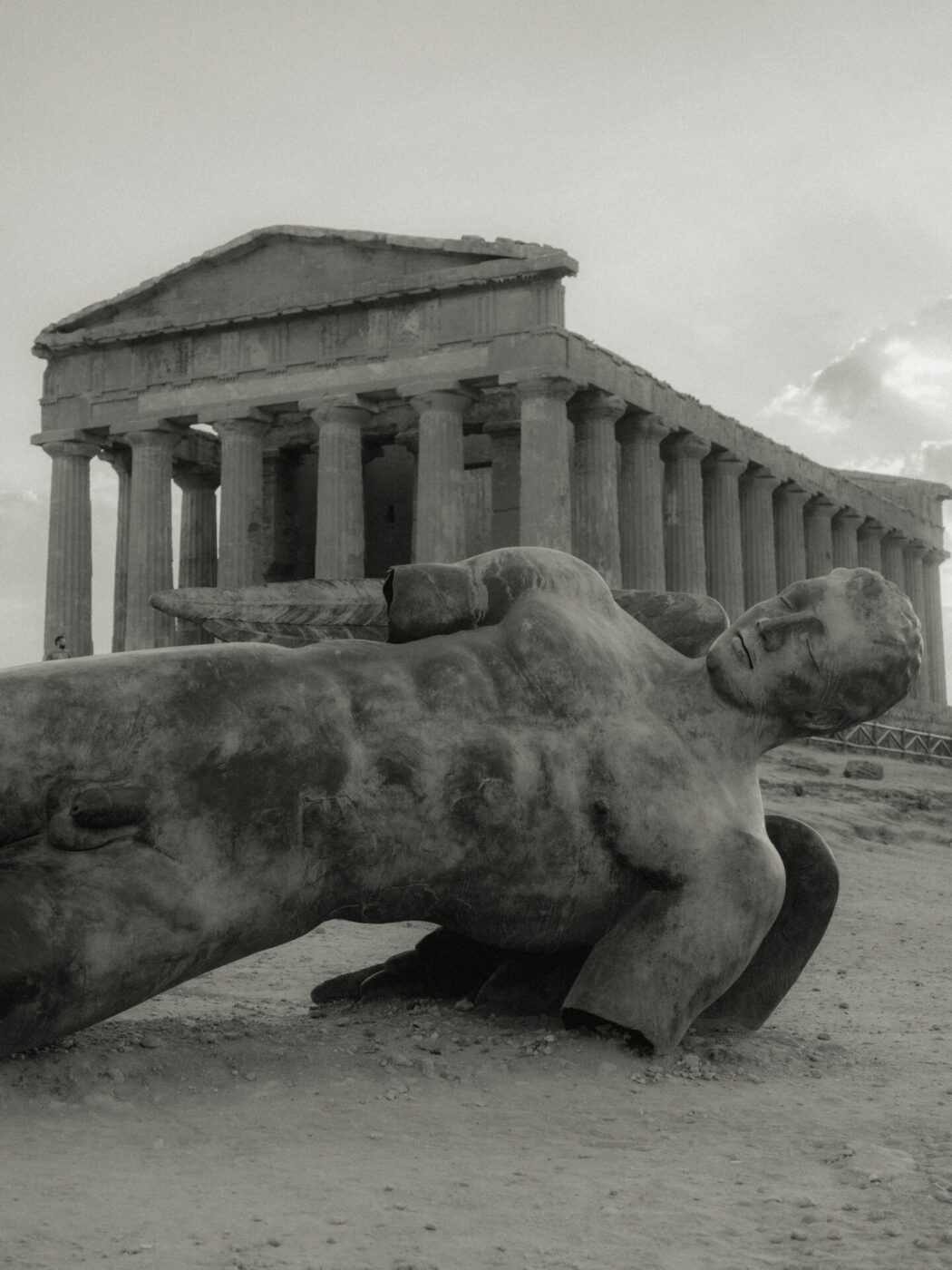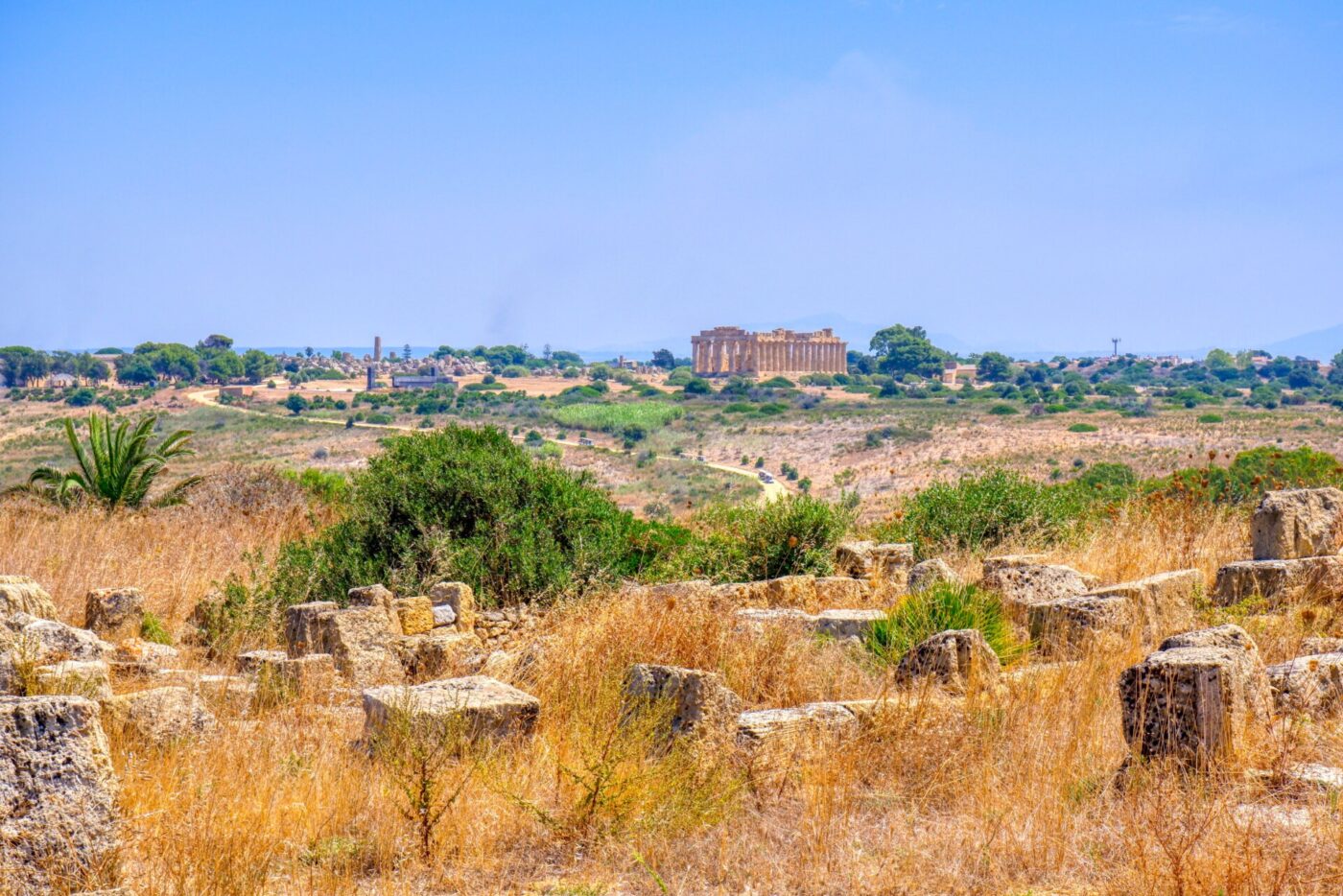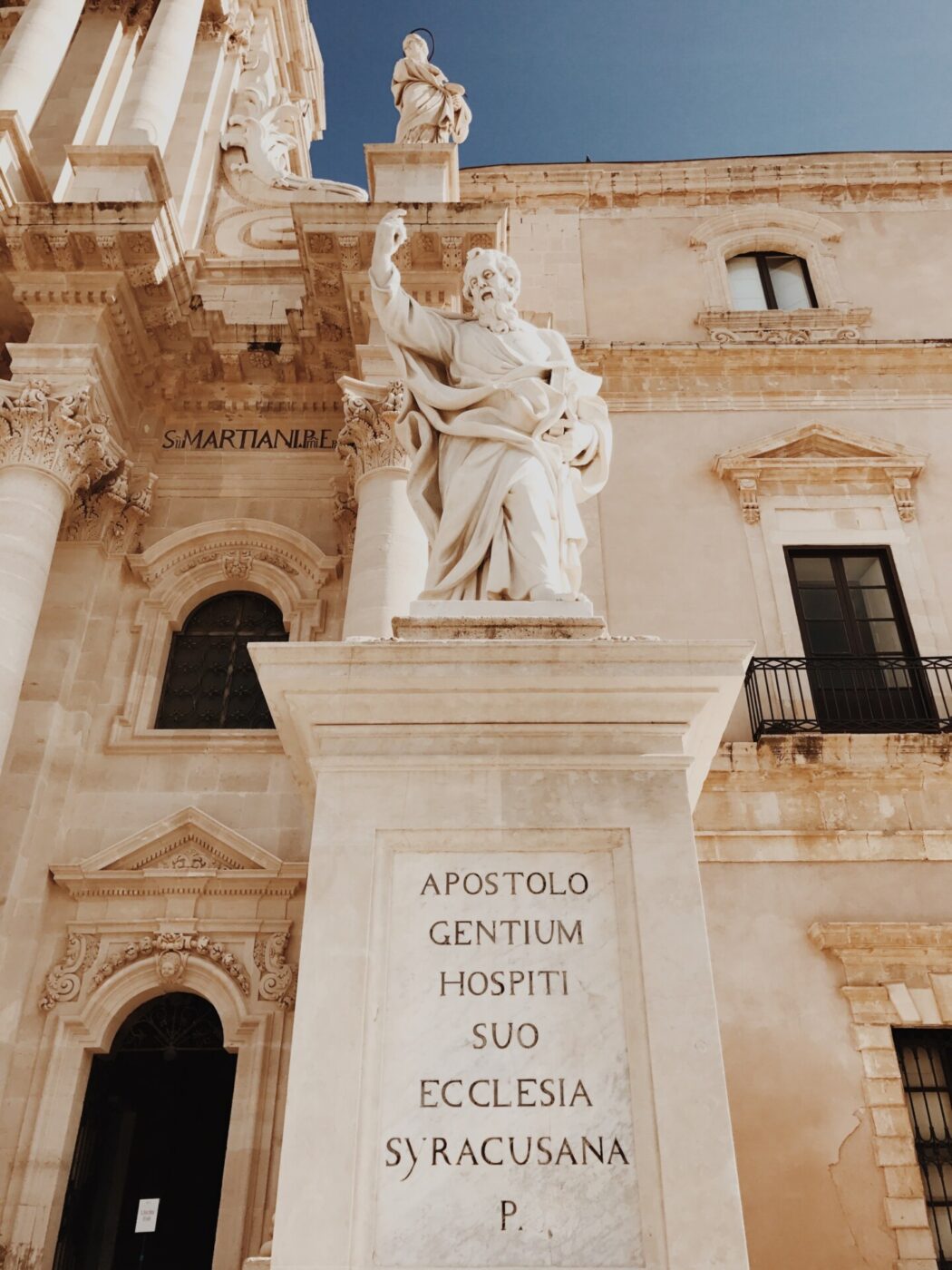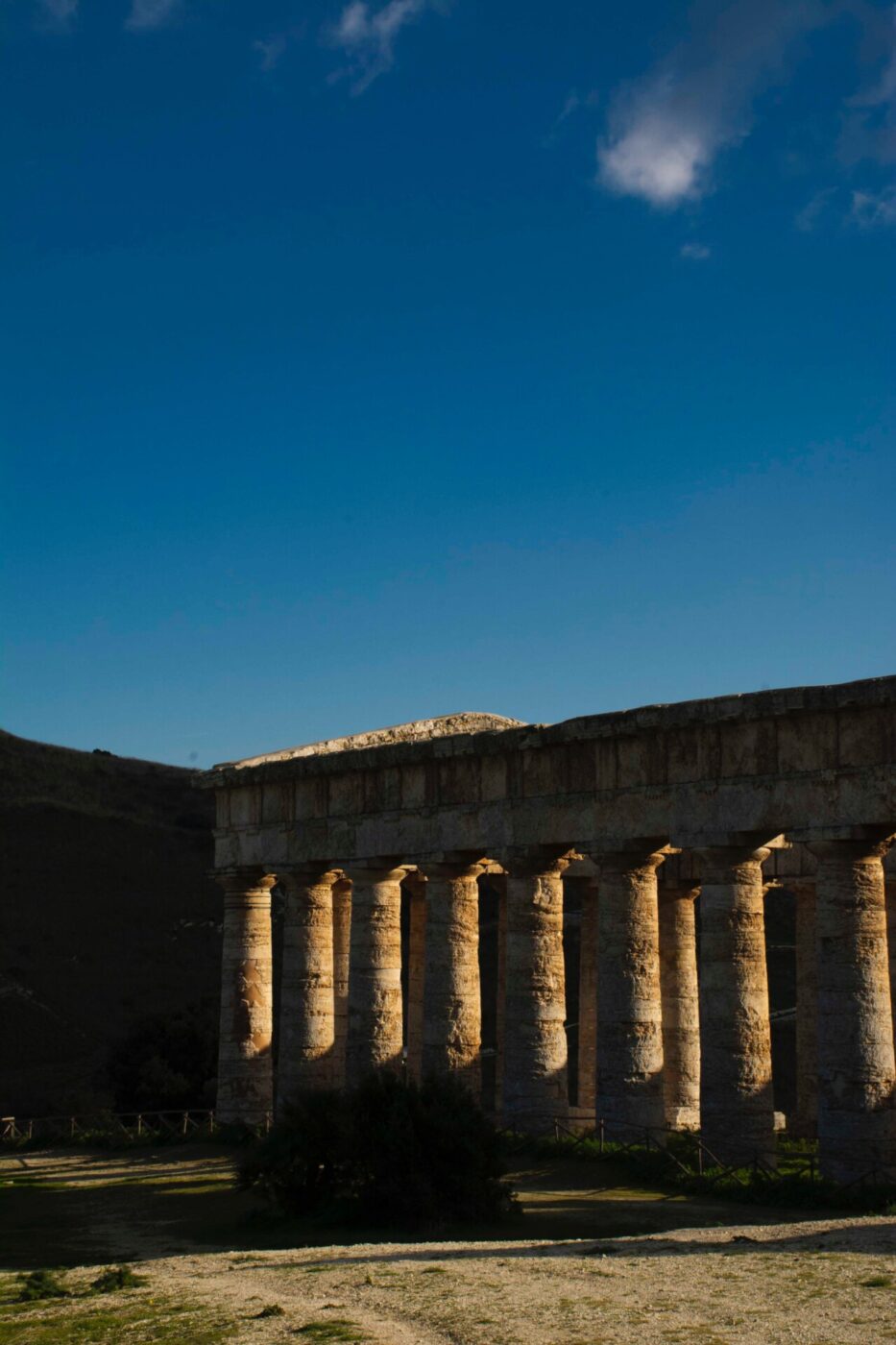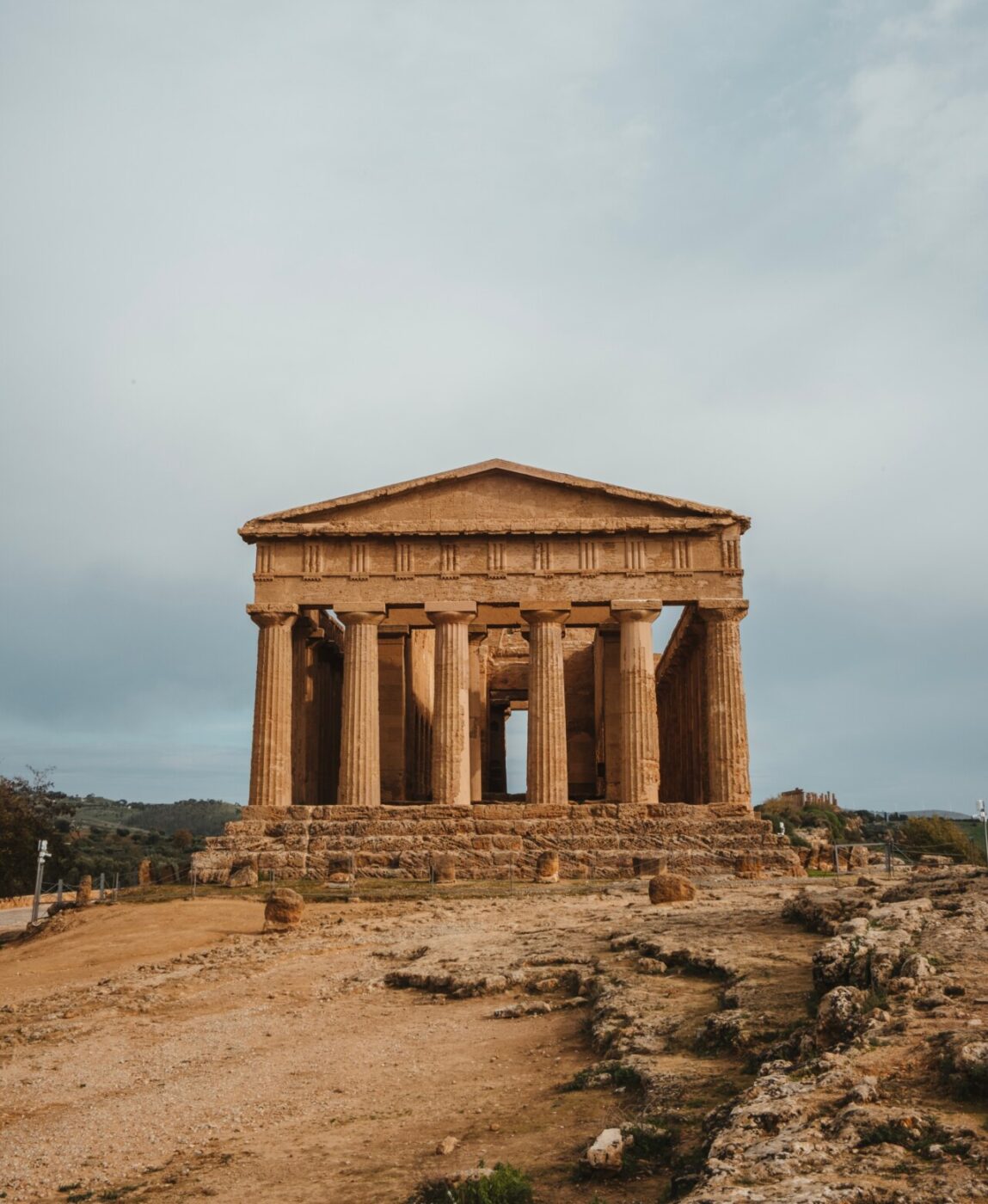When Italians discover that I’m Greek-American, they almost always utter the same thing: “Una faccia, una razza” (“One face, one race”). It’s not just the way we look, or the uncanny similarities in certain words (take, for example, “sabato” or “Σάββατο”, which is the same in both Greek and Italian)—there is a centuries-long history that links the two cultures. And nowhere is that perhaps more apparent than on the island of Sicily, a melting pot that has managed to retain vestiges of its various Greek, Arab, French, and Spanish conquerors. If there is one thing Sicilians are not, it is simply Italian, whatever our modern conception of that means today.
Still, among Sicily’s occupiers, it is fair to say that Ancient Greece was one of the first. While the Greeks settled first in Southern Italy, in areas like Ischia and Cumae, they shortly after began setting up cities in modern-day Syracuse, Messina, and Catania around 730 B.C.E. The Greek conception of a colony, however, was different from what our current one might look like today; the Greeks called them “poleis” set up by “apoikia”, which had the connotation of a city constituted by people separated from their homeland, rather than a forcible takeover with ongoing connections to the homeland. Most of the chosen locations had a few key things in common; proximity to the sea or to water sources and good land for agriculture were chief among them.
What motivated the Greeks who did come to Sicily is hard to say. Scholars once postulated a type of “demographic crisis,” a flight from the mainland perhaps instigated by environmental issues or overcrowding, or a pursuit for new business opportunities, inspired by mercantile connections that had already been made. Whatever the case, by the end of the fifth century B.C.E., Sicily was dotted with so many Greek settlements that it became known—along with southern Italy—as Magna Graecia, first termed as such by Greek historian Polybius a few hundred years later.
To establish their dominance, to display their wealth, and, of course, to serve a customary religious purpose, the Greeks did what in many ways they did best: build temples. The World History Encyclopedia even estimates that Sicily had a “greater density of monumental temples than any other area of the Mediterranean” and now has “more well-preserved examples than anywhere else,” likely outside of Greece.

Selinunte
So how has Sicily come to be the home to so many well-conserved examples of monumental Greek temple architecture? The answer is, in part, repurposing, which was common during Roman and Christian times. Ancient sites or former temples were often worked into Christian sites, in a practice known as spolia–a sort of ancient form of reduce, reuse, recycle. The act was so accepted that Christian philosopher St. Augustine of Hippo, famous for his Confessions, wrote in 397 C.E. that it was lawful to take over the “fine raiment” of pagans and convert it to “Christian use.” While in the East, writes scholar Jacqueline D. Schwartz, it was common for temples to be razed and burned, Roman emperors actually instituted rules and regulations that “protected pagan temples for their cultural importance and classic aesthetics.” It was Constantine who both formally legalized Christianity and converted to the religion at the end of his life. His son Constantius I passed a law in the 340s advocating for “the preservation of temples,” noting, however, that “all superstitions must be eradicated.”
“Constantius’ edict for the protection of temples relates to pagan buildings outside the walls of Rome,” wrote Hans-Rudolf Meier, now professor at Bauhaus-Universität Weimar. “It was precisely the Roman periphery which had become quickly and decisively Christian, so that isolated pagan shrines in this region, already difficult to control, might have appeared as extraneous elements offering both overzealous Christians and thieves of building materials wide scope for their destructive activities.”
These guidelines were ultimately instrumental in protecting what remained of Sicily’s Greek temples. Agrigento’s famous Tempio della Concordia, for example, was built during the second half of the fifth century B.C.E. but was eventually transformed into a Christian church at the beginning of the second century C.E., said Parco Archeologico della Valle dei Templi archeologist Valentina Caminneci.
“Even if the temple was transformed, it continued to survive,” Caminneci said. “If the buildings were used and inhabited and visited, this assures their continuity throughout time. It is why our temple is so well-preserved.”
Other Greek temples, like Siracusa’s Tempio di Atena, were literally embedded into the Christian structures they would become. Columns from the fifth century B.C.E. temple—erected in honor of the victory against the Carthaginians in the battle of Himera—are still visible along the right side of the Duomo di Siracusa.
Ultimately, Caminneci said, the temples represented the Greeks’ religious life—they were usually built as a sanctuary, a sacred place that could welcome pilgrims. That their transformation into something else could save them, we might call good luck.

Tempio della Concordia, Photography by Kurt Bauer
AGRIGENTO
If one must choose a single Greek temple site to see in Sicily, then the Parco Archeologico della Valle dei Templi in Agrigento has to be at the top of the list–though it’s certainly not a secret. Located in the ancient city Akragas, founded around 580 B.C., Greek poet Pindar called it “the most beautiful city among those that host men.”
At first sight, Agrigento is a surprise. The site’s massive temples seemingly spring organically from the valley, as if they rose naturally from their lush surroundings, sprouting like Athena from Zeus’ head. They are a testament to a time past, when Sicily was largely a collection of Greek colonies that had to perform their public personas in the best way they knew how: architecture.
The city underwent a major construction boom between the sixth and fifth centuries B.C.E., as evidenced by its nine gates and surrounding 12 kilometer-long city walls. By its peak, Akragas had more than 200,000 inhabitants. During this time, major structures like the Tempio di Giove were constructed, of which the Telamoni, or the statue figures of the Giants of Greek mythology still considered some of the largest ancient Greek art to exist, were a part. As Akragas became richer and more prosperous, the famous temples of Ercole, della Concordia, and Giunone were also built.
What makes the Valle dei Templi so unusual is its walkable scale. To see one well-preserved monumental Greek temple in the flesh might be unusual; to walk from ruin to ruin is almost unthinkable. It paints a vivid picture of what Akragas must have been like at its height, when these pivotal temples were built.
“It is then that the city is at its richest and it becomes more important in the Mediterranean,” Caminneci said. “But this power, let’s say, collapses in the fifth century B.C.E. when the city is invaded by the Carthigians, who burn and destroy it. From that moment begins a period in which the city will not recover from that destruction.”
The city was refounded by Greeks, who presumably helped save the temples, but eventually came under Roman rule.

Temple of Concordia, Agrigento
SEGESTA
Nestled near the northwestern coast of Sicily, only about an hour by car from Palermo, Segesta is a site not to miss. As the archaeological park itself notes, the location is “extremely evocative, perched on a series of hills…decorated by the addition of its two main monuments: the temple and the theater.”
Much like Agrigento, Segesta has the illusion of privacy, which makes its massive temple somewhat of a shock. Perhaps even more impressive is the Greek theater, which opens up to the surrounding valley and uses Sicily’s rolling landscape as its literal backdrop.
What differentiates Segesta historically is that it was not developed by the Greeks. Instead, it was settled by the Elymians, a people indigenous to western Sicily. If we follow the Roman tradition, then Segesta was a colony set up by the survivors of the Trojan War. Chief among them was Aeneas, the eventual founder of Rome, who might have even left his elderly father, Anchises, at the site. Still, archaeologists have yet to find any clear signs between Segesta and Asia Minor, from where Aeneas would have come.
While Segesta may have managed to retain its independence, it had a continuously conflictual rapport with its neighbor to the south, Selinunte. By 260 B.C.E., Segesta came under Roman rule, although the people of Segesta were still given a certain amount of political autonomy and control over their own land, due in part to their “shared Trojan origins.”
But Segesta’s famous temple, while Greek in appearance, was not actually constructed by Greeks. Built at the end of the fifth century B.C.E., it is “one of the few examples of a Doric temple that has never collapsed.” And while archaeologists argue Segesta was culturally Greek, the building itself differs from Greek temples in important ways, like a lack of an internal structure. It is itself an enigma.
What is clear, according to archaeologists, is that the temple’s central location, “quite visible even from a distance,” would have made it a central point in Segesta’s urban structure.

Segesta
SELINUNTE
Selinunte, Segesta’s nearby rival to the south, has a location equally evocative to its enemy for a different reason: its coastal perch. While Segesta is just slightly inland from the water, secured in some way by its hilly terrain, Selinunte directly overlooks the Mediterranean Sea. Its temples offer the impression of what the Greeks might have seen after a long voyage, disembarking for the first time in a long time on their homeland.
The city was established around 651 or 628 B.C.E. as a Greek colony by residents of Megara, in mainland Greece, and Megara Hyblaea, a Greek city in Sicily near Siracusa. Its name, σέλινον in Greek, is derived from the wild celery that grew on the land. Despite roughly a hundred years of greatness, Selinunte lost the rivalry against Segesta in the late fifth century B.C.E., when an army of 100,000 Carthaginian men sacked the city as part of their alliance with Segesta. Not many native people from Selinunte were left—16,000 of its residents were killed, and only 2,600 made it out. By 250 B.C.E., it was completely demolished by the Carthaginians.
Before their tragic history, the residents of Selinunte made the most of their golden days. The site still boasts the ruins of at least five ancient temples, including one to Hera Matronale and separate sanctuaries to Zeus Meilichios and Demetra Malophoros. The Tempio di Hera and Tempio C are perhaps the most complete structures on the site, but it is the city’s sheer expansiveness that stuns. With a distance of 377 hectares, or about 932 acres, among the entire archaeological park’s sites, the ancient city was clearly diffuse. The World History Encyclopedia calls it “one of the best examples of ancient town planning,” given the fact that it was completely redesigned between 580 and 570 B.C.E. in a two-grid pattern with a trapezoid central agora, the political and social center of the city. While many of its temples do not survive in any form close to their entirety, traversing the site is a worthwhile exercise to take in the scope of the settlement.

Seliunite
SIRACUSA (TEMPIO DI ATENA)
The overtly Baroque style of the Duomo di Siracusa, the central site in Ortigia’s main piazza, is so ornate that one would be forgiven for missing the columns embedded on its left side. But they are actually a vestige of the civilization from antiquity that predated any Baroque habitation of Sicily.
One of the most ancient cities in Sicily, Siracusa was founded in 734 B.C.E. by the Corinthians. In less than 300 years, it changed hands when it was defeated in battle by Hippocrates of Gela, a settlement in the southern part of the island. His successor, Gelon, rose to fame after he defeated an invasion of the Carthaginians at Himera in 480 B.C.E. By that point, he had already moved his government center from Gela to Siracusa.
In honor of that battle win, Gelon naturally decided that only one gesture would make the most sense: erect a temple. The Doric Temple of Athena, dedicated to the goddess of wisdom and warfare, was “not only the most important sacred complex on the island of Ortigia, but the best preserved of all of them,” says tourism agency Visit Sicily. Famous Republican orator and politician Cicero even wrote about the temple, noting that the golden shield of Athena was the last thing one could see from the sea, sailing away from Siracusa. He also complained that the temple had been plundered of its artistic works at the hands of Gaius Verres, then the Roman magistrate in charge of Sicily. It was only in the fifth century C.E. that the structure was walled and converted into a church.
While Siracusa’s Tempio di Atena is far from the only classical structure to be repurposed in Christian times, it is perhaps the most stirring example of a Christian and ancient Greek structure that literally coexist. It is often true that a church had roots in ancient times (San Giovanni in Laterano, for example, was built on top of the remains of ancient Roman military barracks), but it’s not so often that we can actually see it. Here, look for the columns of the Doric temple of Athena, placed into the walls of the Duomo di Siracusa.
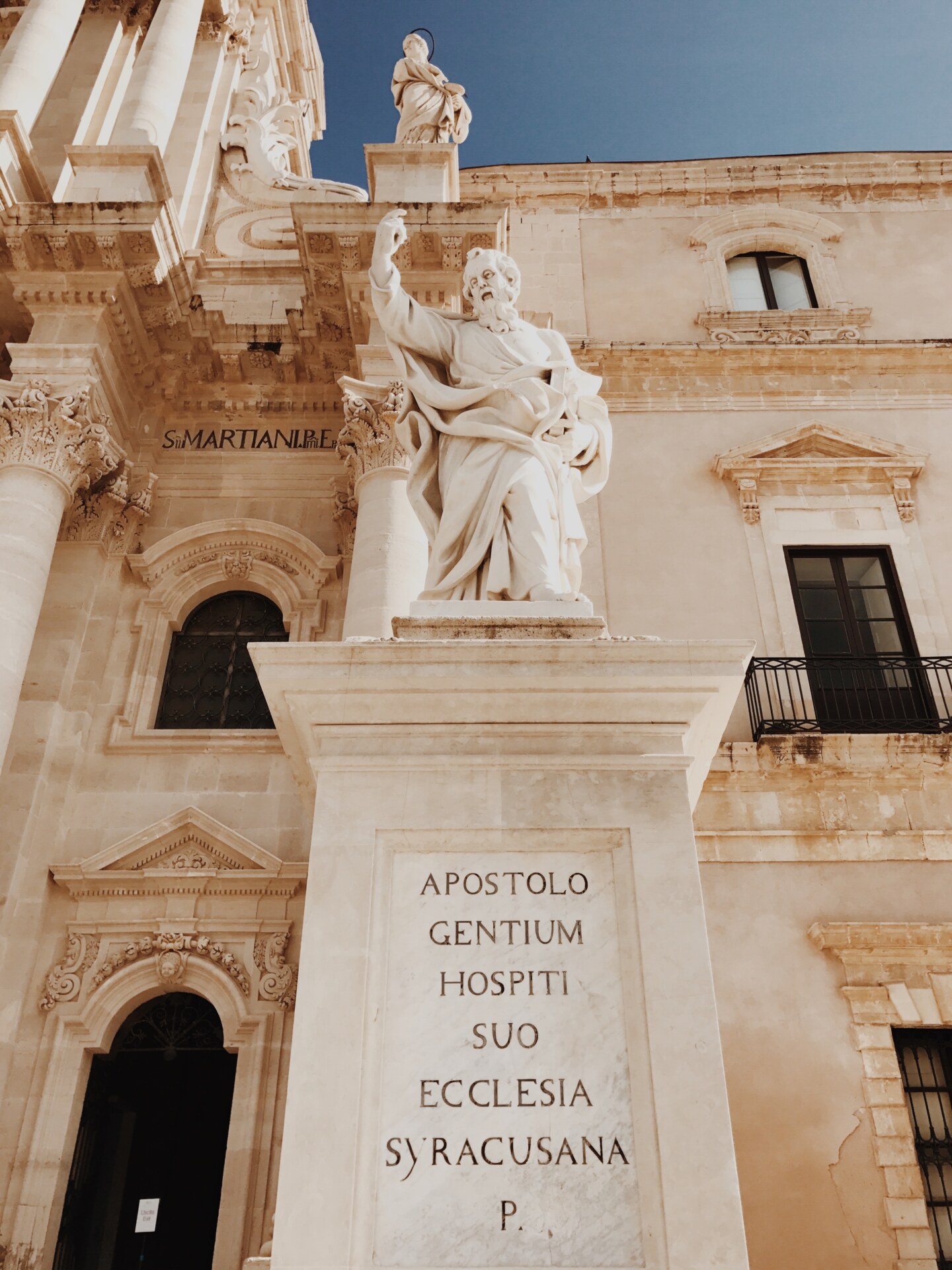
Tempio di Atena (Siracusa)
MORGANTINA
The most off-the-beaten-path site of the group, Morgantina is tucked in a hidden pocket of Sicily, in the lowlands of the central southern part of the island. The site sprawls out before you, culminating in an impressive theater and a walkable area that illustrates the ancient settlement’s span.
Morgantina is most interesting for what it had and was, because it is often called an “abandoned city.” The city’s history stops in the first century—it was only between 1953 and 1955 that it was rediscovered by an American archaeological group and identified soon after as Morgantina. The site is fascinating in part because its earliest settlement dates back to the Bronze Age, from 2200 to 1600 B.C.E.
Morgantina itself was founded by the Morgeti people, who came from the Italian peninsula at the same time as the Siculi, the group that gave the island its name. The area of Cittadella, as the Bronze Age site came to be known, was marked by its elongated rectangular huts. But by the sixth century, these Iron Age structures were replaced by a Greek temple that was around 33 meters in length. The site’s famous statues of Demeter and Kore date back to around this time period. They are the earliest known examples of the acrolitic technique, in which the heads, hands, and feet are made of marble and inserted onto a body made out of wood and dressed in cloth. They can be seen today in the Aidone Museum by Morgantina.
By the late fifth century B.C.E., many of the early buildings were abandoned and destroyed, in part due to the fact that Morgantina was taken over by Ducetius, a leader of the indigenous people of Sicily, in 459 B.C.E. The site saw most of its major construction during the third century B.C.E., likely due to an “ambitious urban project” undertaken by a different leader, Hieron II of Siracusa, who supervised the construction of an ekklesiasterion, or citizen meeting hall, and two bath complexes.
As is the history with most of the Greek Sicilian settlements, by 211 B.C.E., during the Punic Wars, the city was pillaged by the Romans and given to a community of Spanish former mercenaries. After the reorganization of Sicily by Augustus around 36 B.C.E., Morgantina would not survive.

Morgantina Theater


